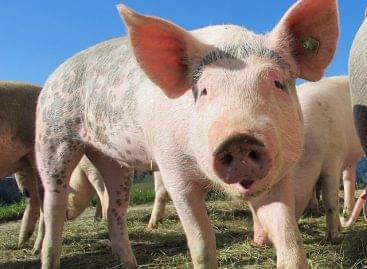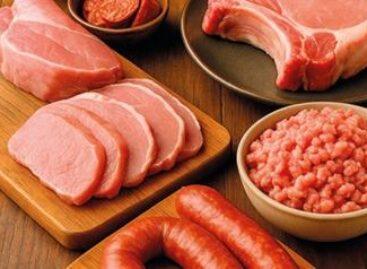The domestic and EU pork sector faces difficult years: what can be expected in the future?
The domestic and European pork industry has been struggling with serious challenges for years. Rising purchase prices, falling consumption, and the change in the social perception of the sector all place a heavy burden on producers and processors. This is what Tamás Éder, the president of the Hungarian Meat Industry Association (Húszövetség), spoke about in his interview with the Agricultural Sector.

Production in the pork sector of the European Union has been declining for quite some time. Between 2021 and 2023, the number of pig slaughters decreased by 12% in the Union, although an increase of 1.5% was observed until May this year, which perhaps indicates a stop to the negative trend of recent years. However, according to Tamás Éder, the sector’s economic situation remains difficult. The price of live pigs, energy prices and wages all rose significantly, which the meat industry companies could not fully implement in consumer prices.
Change in consumer habits
In addition to constantly increasing prices, the consumption of pork is also decreasing. In Western Europe and the Nordic countries, this is primarily due to a change in lifestyle, as well as environmental and ethical considerations. In Hungary, however, the main reason for the decline in consumption is the deterioration of the population’s income situation and the drastic rise in food prices. People are increasingly turning to lower-quality, cheaper products, which further worsens the efficiency of domestic meat companies.
In the Union, the sector is generally characterized by the acceleration of consolidation and concentration. The larger players are buying up the smaller ones, while some slaughterhouses are suspending their operations. In Western Europe, the stricter regulatory environment is also putting increasing pressure on animal husbandry, which may lead to a decrease in production. If this trend continues, an increase in exports from Eastern Europe, including Hungary, can be expected.
What can be expected in the future?
The players in the meat industry are now waiting to see if the geographical reorganization of the pork sector from west to east will become a reality. In the region, they expect that with the easing of inflationary effects, consumption will also normalize, and the population will once again be able to afford to buy meat. In the past period, however, the domestic sales of Hungarian slaughterhouses decreased, while the demand for meat products increased slightly.
According to Tamás Éder, the stabilization of feed prices and keeping the self-costs of pig farmers under control can give hope that the sector will overcome the difficulties. Industry players are confident that the cost increase of the past two years will be incorporated into the transfer prices, although stricter regulations and other cost-increasing measures remain a challenge.
One of the most important questions in the coming years will be how the sector reacts to possible geographical reorganization, and whether it will be possible to restore consumption to the level before the coronavirus epidemic and high inflation.
Related news
Hungarian sausages on the New Year’s Eve table!
🎧 Hallgasd a cikket: Lejátszás Szünet Folytatás Leállítás Nyelv: Auto…
Read more >K&H: significant price drop in the pork market
🎧 Hallgasd a cikket: Lejátszás Szünet Folytatás Leállítás Nyelv: Auto…
Read more >Domestic meat industry in a market turmoil
🎧 Hallgasd a cikket: Lejátszás Szünet Folytatás Leállítás Nyelv: Auto…
Read more >Related news
Even though the price of cocoa has halved, chocolate will not become cheaper
🎧 Hallgasd a cikket: Lejátszás Szünet Folytatás Leállítás Nyelv: Auto…
Read more >Temu is crushing domestic webshops – Christmas won’t change either
🎧 Hallgasd a cikket: Lejátszás Szünet Folytatás Leállítás Nyelv: Auto…
Read more >The Hungarian Food Bank is putting together 44,000 food packages from the proceeds of ALDI’s first Advent market
🎧 Hallgasd a cikket: Lejátszás Szünet Folytatás Leállítás Nyelv: Auto…
Read more >






